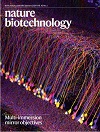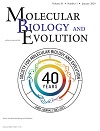Latest Publications
Xavier Didelot publications
 Integrated analysis of patient networks and plasmid genomes reveals a regional, multi-species outbreak of carbapenemase-producing Enterobacterales carrying both blaIMP and mcr-9 genes
Integrated analysis of patient networks and plasmid genomes reveals a regional, multi-species outbreak of carbapenemase-producing Enterobacterales carrying both blaIMP and mcr-9 genes
Y Wan, AC Myall, A Boonyasiri, F Bolt, A Ledda, S Mookerjee, AY Weiße, M Getino, JF Turton, H Abbas, R Prakapaite, A Sabnis, A Abdolrasouli, K Malpartida-Cardenas, L Miglietta, H Donaldson, M Gilchrist, KL Hopkins, MJ Ellington, JA Otter, G Larrouy-Maumus, M Edwards, J Rodriguez-Manzano, X Didelot, M Barahona, AH Holmes, E Jauneikaite, F Davies
Carbapenemase-producing Enterobacterales (CPE) are challenging in healthcare, with resistance to multiple classes of antibiotics. This study describes the emergence of IMP-encoding CPE amongst diverse Enterobacterales species between 2016 and 2019 across a London regional network. Our patient network and plasmid analyses demonstrate an interspecies, plasmid-mediated outbreak of blaIMPCPE, which remained unidentified during standard investigations. With DNA sequencing and multi-modal data incorporation, the outbreak investigation approach proposed here provides a framework for real-time identification of key factors causing pathogen spread. Plasmid-level outbreak analysis reveals that resistance spread may be wider than suspected, allowing more interventions to stop transmission within hospital networks.
Journal of Infectious Diseases. January 2024
 Genomic epidemiology of the clinically dominant clonal complex 1 in the Listeria monocytogenes population in the UK
Genomic epidemiology of the clinically dominant clonal complex 1 in the Listeria monocytogenes population in the UK
Emily T. Fotopoulou, Claire Jenkins, Clare R. Barker, Anais Painset, Xavier Didelot, Ameze Simbo, Amy Douglas, Gauri Godbole, Frieda Jorgensen, Saheer Gharbia, Jim McLauchlin
Listeria monocytogenes is a food-borne pathogen, typically affecting the elderly, immunocompromised patients and pregnant women. The aim of this study was to determine the population structure of L. monocytogenes clonal complex 1 (CC1) in the UK and describe the genomic epidemiology of this clinically significant CC. We interrogated a working dataset of 4073 sequences of L. monocytogenes isolated between January 2015 and December 2020 from human clinical specimens, food and/or foodproduction environments. Analysis of demographic and clinical outcome data identified CC1 as a clinically significant cause of invasive listeriosis in the elderly population and in women of child-bearing age. Phylogenetic analysis revealed the population structure of CC1 in the UK comprised small, sparsely populated genomic clusters. Only clusters containing isolates from an implicated food vehicle, or food processing or farming environments, were resolved, emphasizing the need for clinical, food and animal-health agencies to share sequencing data in real time, and the importance of a One Health approach to public-health surveillance of listeriosis.
Temporal changes in the positivity rate of common enteric viruses among paediatric admissions in coastal Kenya, during the COVID-19 pandemic, 2019-2022
 Arnold W. Lambisia, Nickson Murunga, Martin Mutunga, Robinson Cheruiyot, Grace Maina, Timothy O. Makori, D. James Nokes and Charles N. Agoti
Arnold W. Lambisia, Nickson Murunga, Martin Mutunga, Robinson Cheruiyot, Grace Maina, Timothy O. Makori, D. James Nokes and Charles N. Agoti
The non-pharmaceutical interventions (NPIs) implemented to curb the spread of severe acute respiratory syndrome coronavirus 2 (SARS-CoV-2) early in the coronavirus disease 2019 (COVID-19) pandemic, substantially disrupted the activity of other respiratory viruses. However, there is limited data from low-and-middle income countries (LMICs) to determine whether these NPIs also impacted the transmission of common enteric viruses. Here, we investigated the changes in the positivity rate of five enteric viruses among hospitalised children who presented with diarrhoea to a referral hospital in coastal Kenya, during COVID-19 pandemic period. Our study finds that in 2020 the transmission of common enteric viruses, especially RVA and astrovirus, in Kilifi Kenya may have been disrupted due to the COVID-19 NPIs. After 2020, local enteric virus transmission patterns appeared to return to pre-pandemic levels coinciding with the removal of most of the government COVID-19 NPIs.
Slow release of a synthetic auxin induces formation of adventitious roots in recalcitrant woody plants
 O Roth, S Yechezkel, O Serero, A Eliyahu, I Vints, P Tzeela, A Carignano, DP Janacek, V Peters, A Kessel, V Dwivedi, M Carmeli-Weissberg, F Shaya, i Faigenboim-Doron, KL Ung, B Panyella Pedersen, J Riov, E Klavins, C Dawid, Z Hammes, N Ben-Tal, R Napier, E Sadot, R Weinstain
O Roth, S Yechezkel, O Serero, A Eliyahu, I Vints, P Tzeela, A Carignano, DP Janacek, V Peters, A Kessel, V Dwivedi, M Carmeli-Weissberg, F Shaya, i Faigenboim-Doron, KL Ung, B Panyella Pedersen, J Riov, E Klavins, C Dawid, Z Hammes, N Ben-Tal, R Napier, E Sadot, R Weinstain
Clonal propagation of plants by induction of adventitious roots (ARs) from stem cuttings is a requisite step in breeding programs. Due to the central role of auxin in organogenesis, indole-3-butyric acid is often used as part of commercial rooting mixtures, yet many recalcitrant plants do not form ARs in response to this treatment. Here we describe the synthesis and screening of a focused library of synthetic auxin conjugates in Eucalyptus grandis cuttings and identify 4-chlorophenoxyacetic acid-L-tryptophan-OMe as a competent enhancer of adventitious rooting in a number of recalcitrant woody plants, including apple and argan. Comprehensive metabolic and functional analyses reveal that this activity is engendered by prolonged auxin signaling due to initial fast uptake and slow release and clearance of the free auxin 4-chlorophenoxyacetic acid. This work highlights the utility of a slow-release strategy for bioactive compounds for more effective plant growth regulation.
Inference of infectious disease transmission through a relaxed bottleneck using multiple genomes per host
 Jake Carson, Matt Keeling, David Wyllie, Paolo Ribeca, Xavier Didelot
Jake Carson, Matt Keeling, David Wyllie, Paolo Ribeca, Xavier Didelot
Here we present a new methodology that can use any number of genomes sampled from a set of individuals to reconstruct their transmission network. Furthermore, we remove the need for the assumption of a complete transmission bottleneck. We use simulated data to show that our method becomes more accurate as more genomes per host are provided, and that it can infer key infectious disease parameters such as the size of the transmission bottleneck, within-host growth rate, basic reproduction number and sampling fraction. We demonstrate the usefulness of our method in applications to real datasets from an outbreak of Pseudomonas aeruginosa amongst cystic fibrosis patients and a nosocomial outbreak of Klebsiella pneumoniae.
NCAM mimetic peptide P2 synergizes with bone marrow mesenchymal stem cells in promoting functional recovery after stroke
 Lan X.Y., Liang X.S., Cao M.X., Qin H.M., Chu C.Y., Boltze J., Li S.
Lan X.Y., Liang X.S., Cao M.X., Qin H.M., Chu C.Y., Boltze J., Li S.
The neural cell adhesion molecule (NCAM) promotes neural development and regeneration. Whether NCAM mimetic peptides could synergize with bone marrow mesenchymal stem cells (BMSCs) in stroke treatment deserves investigation. We found that the NCAM mimetic peptide P2 promoted BMSC proliferation, migration, and neurotrophic factor expression, protected neurons from oxygen-glucose deprivation through ERK and PI3K/AKT activation and anti-apoptotic mechanisms in vitro. Following middle cerebral artery occlusion (MCAO) in rats, P2 alone or in combination with BMSCs inhibited neuronal apoptosis and induced the phosphorylation of ERK and AKT. P2 combined with BMSCs enhanced neurotrophic factor expression and BMSC proliferation in the ischemic boundary zone. Moreover, combined P2 and BMSC therapy induced translocation of nuclear factor erythroid 2-related factor, upregulated heme oxygenase-1 expression, reduced infarct volume, and increased functional recovery as compared to monotreatments. Treatment with LY294002 (PI3K inhibitor) and PD98059 (ERK inhibitor) decreased the neuroprotective effects of combined P2 and BMSC therapy in MCAO rats. Collectively, P2 is neuroprotective while P2 and BMSCs work synergistically to improve functional outcomes after ischemic stroke, which may be attributed to mechanisms involving enhanced BMSC proliferation and neurotrophic factor release, anti-apoptosis, and PI3K/AKT and ERK pathways activation.
Journal of Cerebral Blood Flow & Metabolism. January 2024
Interactions of long-term grazing and woody encroachment can shift soil biogeochemistry and microbiomes in savanna ecosystems
Ryan M. Mushinski, Yong Zhou, Ayumi Hyodo, Claudio Casola, Thomas W. Boutton
 We investigated the interactions between livestock grazing history (none, moderate, heavy) and vegetation cover (grassland, juniper, oak) using a ∼ 70-year grazing experiment in west-central Texas. We explored effects on soil organic carbon (SOC), total nitrogen (TN), total phosphorus (TP), microbial community composition, and function. The findings highlight how long-term livestock grazing and woody plant encroachment influence soil C, N, P cycles, altering soil microbial community structure and function. This study provides insights for savanna ecosystem management and integrating land cover effects into biogeochemical models for global change scenarios.
We investigated the interactions between livestock grazing history (none, moderate, heavy) and vegetation cover (grassland, juniper, oak) using a ∼ 70-year grazing experiment in west-central Texas. We explored effects on soil organic carbon (SOC), total nitrogen (TN), total phosphorus (TP), microbial community composition, and function. The findings highlight how long-term livestock grazing and woody plant encroachment influence soil C, N, P cycles, altering soil microbial community structure and function. This study provides insights for savanna ecosystem management and integrating land cover effects into biogeochemical models for global change scenarios.
